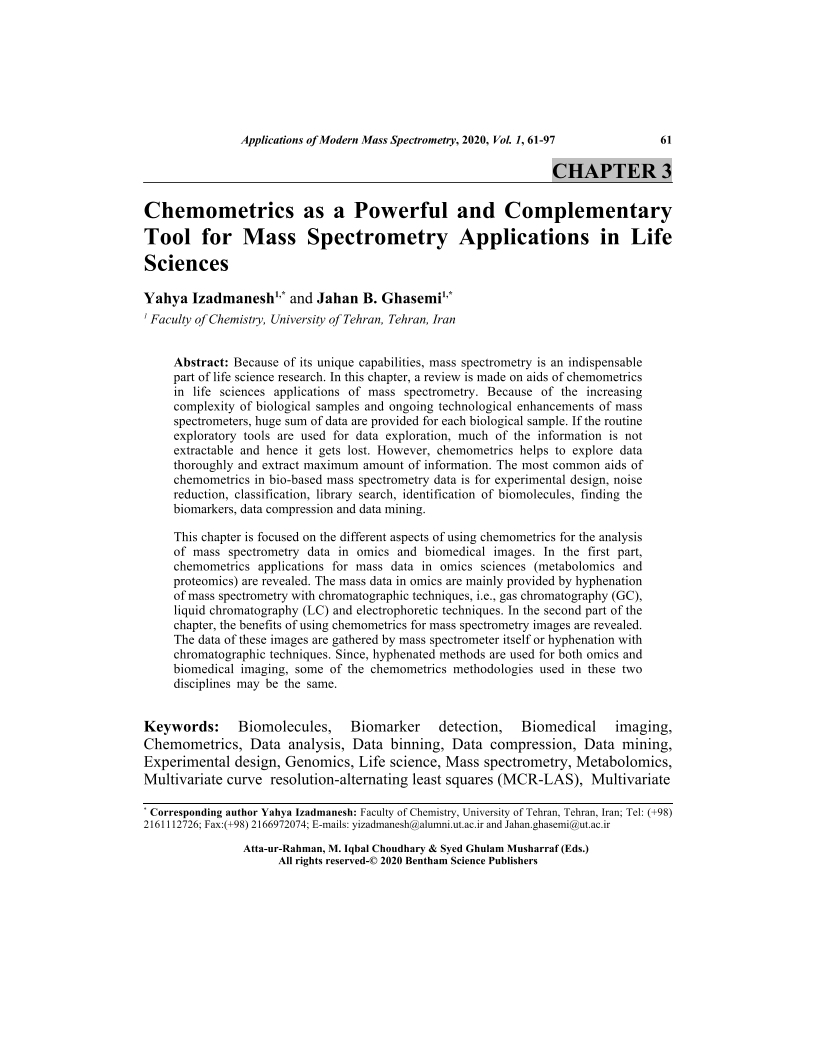Poisonous Substances in Tropical Medicinal and Edible Plants: Traditional Uses, Toxicology, and Characterization by Hyphenated Mass Spectrometry Techniques

- Authors: Amanda E. de Athayde1, Monalisa A. Moreira2, Gabriella B. Souza3, Tiago Tizziani4, Maique W. Biavatti5, Louis P. Sandjo6
-
View Affiliations Hide Affiliations1 Programa de Pós Graduação em Farmácia, CCS, Universidade Federal de Santa Catarina, Florianópolis, SC, Brazil 2 Programa de Pós-Graduação em Química, Departamento de Química, CFM, Universidade Federal de Santa Catarina, Florianópolis, SC, Brazil 3 Programa de Pós-Graduação em Química, Departamento de Química, CFM, Universidade Federal de Santa Catarina, Florianópolis, SC, Brazil 4 Programa de Pós-Graduação em Química, Departamento de Química, CFM, Universidade Federal de Santa Catarina, Florianópolis, SC, Brazil 5 Programa de Pós-Graduação em Farmácia, CCS, Universidade Federal de Santa Catarina, Florianópolis, SC, Brazil 6 Programa de Pós-Graduação em Química, Departamento de Química, CFM, Universidade Federal de Santa Catarina, Florianópolis, SC, Brazil
- Source: Applications of Modern Mass Spectrometry: Volume 2 , pp 90-126
- Publication Date: October 2024
- Language: English
Poisonous Substances in Tropical Medicinal and Edible Plants: Traditional Uses, Toxicology, and Characterization by Hyphenated Mass Spectrometry Techniques, Page 1 of 1
< Previous page | Next page > /docserver/preview/fulltext/9789815050059/chapter-3-1.gif
Alkaloids are natural metabolites containing nitrogen atoms, produced for different biological functions by plants, animals, and microorganisms. In most cases, its production is related to the defense mechanism of an organism through allelopathic effects. Because of this allelopathic property, some of these alkaloids are used as pesticides and can somehow be found in food and beverages as exogenous contaminants. Other contaminations by alkaloids come from industrial processing; so, ingestion of contaminated food or drinks can cause poisoning or death. Many of these plants, although composed of toxic substances, are also used as traditional medicines. Therefore, the compilation of these plants, their chemical constituents, and their pharmacological effects remain important. This paper aims to report traditional preparations and the use of edible plants containing toxic components, their toxicological records of a part of these poisonous metabolites, some regulations on their tolerable dose, and appropriate hyphenated techniques related to mass spectrometric for their separation, detection, quantification, and characterization. In addition, a particular emphasis will be placed on the properties of the stationary and mobile phases used for these studies. The fragmentation mechanism pathways based on mass spectrometry data for these substances will be widely described, and the diagnostic peak will be highlighted.
-
From This Site
/content/books/9789815050059.chapter-3dcterms_subject,pub_keyword-contentType:Journal -contentType:Figure -contentType:Table -contentType:SupplementaryData105

